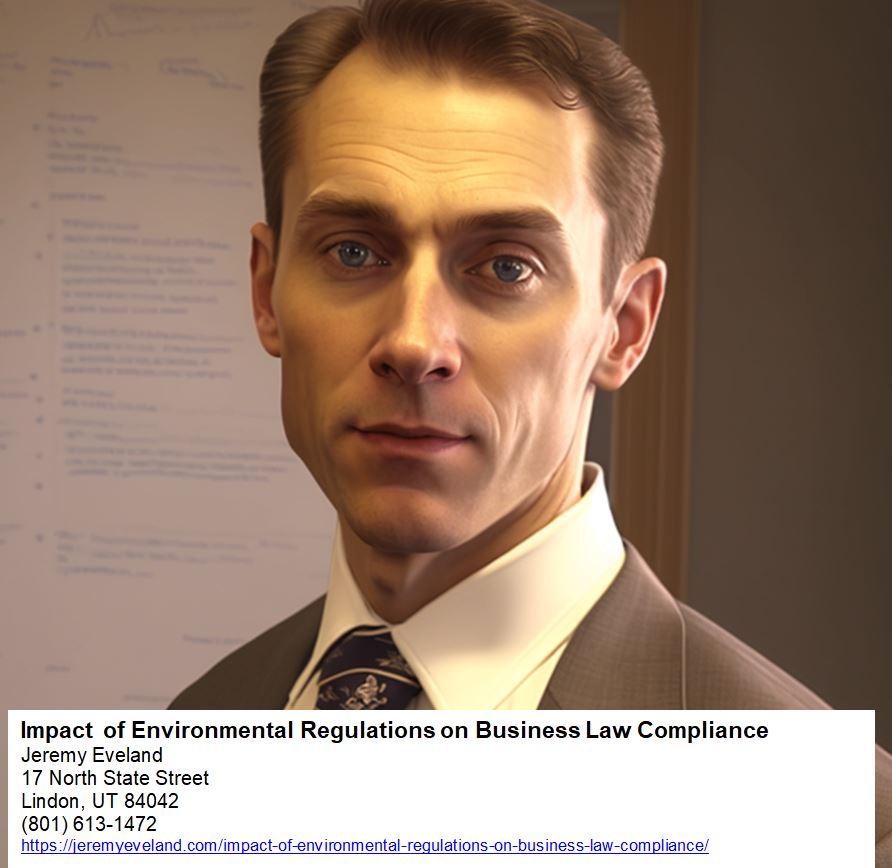In today’s ever-evolving environmental landscape, businesses are under increasing pressure to adopt sustainable practices and minimize their ecological footprint. One area that has gained significant attention is the life cycle of green products. A thorough understanding of the green product life cycle analysis can help businesses make informed decisions about their products, from design and production to disposal. By considering the entire life cycle, including raw material extraction, manufacturing processes, distribution, use, and end-of-life disposal, businesses can identify areas for improvement and implement strategies to enhance sustainability. In this article, we will delve into the concept of green product life cycle analysis, explore its benefits, and address some frequently asked questions to provide companies and business owners with a comprehensive understanding of this important aspect of sustainability in business.
Green Product Life Cycle Analysis

Introduction to Green Product Life Cycle Analysis
Green Product Life Cycle Analysis is a comprehensive tool that allows businesses to assess the environmental, social, and economic impacts of their products throughout their entire life cycle. It involves evaluating the sustainability of a product from the extraction of raw materials, through production and use, to its disposal or recycling. This analysis provides valuable insights that can guide businesses in making more informed decisions to minimize their environmental footprint and improve their overall sustainability performance.
What is Green Product Life Cycle Analysis?
Green Product Life Cycle Analysis, also known as Life Cycle Assessment (LCA), is a systematic approach to evaluate the environmental impacts of a product or service throughout its entire life cycle, from raw material extraction, manufacturing, and distribution, to use and end-of-life disposal. It takes into account the consumption of resources, energy, and emissions associated with each stage of the product’s life cycle to quantify its overall environmental impact.
Why is Green Product Life Cycle Analysis important?
Green Product Life Cycle Analysis plays a crucial role in promoting sustainability and responsible business practices. It enables businesses to identify areas where they can reduce their environmental impact, optimize resource allocation, and improve the overall sustainability of their products. By understanding the true environmental costs of their products, businesses can make informed decisions that are not only beneficial for the environment but also for their long-term financial stability.
Benefits of Green Product Life Cycle Analysis
Implementing Green Product Life Cycle Analysis offers numerous benefits for businesses. It helps them:
-
Identify Hotspots: By conducting a life cycle assessment, businesses can identify the areas of their product’s life cycle that contribute the most to its environmental impact. This enables them to prioritize efforts, allocate resources, and develop strategies for improving sustainability in these critical areas.
-
Reduce Environmental Footprint: Through the analysis of a product’s life cycle, businesses can identify opportunities for reducing energy consumption, emissions, and waste generation. By optimizing these aspects of their operations, businesses can minimize their environmental footprint and achieve cost savings.
-
Improve Resource Efficiency: Green Product Life Cycle Analysis enables businesses to evaluate the efficiency of their resource use and identify opportunities for improvement. By optimizing resource consumption, businesses can reduce waste, enhance productivity, and achieve significant cost savings.
-
Enhance Brand Reputation: Consumers are increasingly conscious of environmental issues and prefer products that demonstrate a commitment to sustainability. Green Product Life Cycle Analysis allows businesses to measure and communicate their environmental performance, demonstrating their commitment to sustainable practices and enhancing their brand reputation.
-
Compliance with Environmental Regulations: Green Product Life Cycle Analysis helps businesses stay compliant with environmental regulations and standards. By identifying and addressing environmental impacts early in the product development process, businesses can minimize the risk of non-compliance and potential legal consequences.
Key Components of Green Product Life Cycle Analysis
Green Product Life Cycle Analysis comprises several key components that collectively provide a comprehensive assessment of a product’s sustainability:
1. Life Cycle Assessment (LCA)
Life Cycle Assessment (LCA) is the core component of Green Product Life Cycle Analysis. It involves quantifying the environmental impacts associated with a product’s life cycle stages, including raw material extraction, manufacturing, distribution, use, and end-of-life disposal. LCA considers various factors such as energy consumption, resource depletion, emissions, and waste generation to provide a holistic understanding of the product’s environmental performance.
2. Life Cycle Costing (LCC)
Life Cycle Costing (LCC) is the financial aspect of Green Product Life Cycle Analysis. It involves assessing the costs incurred throughout a product’s life cycle, including initial investments, production costs, maintenance costs, and end-of-life costs. LCC helps businesses understand the financial implications of their product’s life cycle, aiding in decision-making and identifying opportunities for cost savings.
3. Life Cycle Environmental Impact Assessment
Life Cycle Environmental Impact Assessment assesses the environmental impacts of a product throughout its life cycle. It involves evaluating factors such as greenhouse gas emissions, water and air pollution, waste generation, and resource depletion. This assessment provides valuable insights into the environmental performance of a product, enabling businesses to identify opportunities for improvement and develop sustainability strategies.
4. Life Cycle Social Impact Assessment
Life Cycle Social Impact Assessment evaluates the social impacts of a product throughout its life cycle. It considers factors such as labor conditions, human rights, health and safety, and community well-being. This assessment helps businesses understand the social implications of their products, enabling them to address social issues and promote responsible business practices.

Steps involved in Green Product Life Cycle Analysis
Green Product Life Cycle Analysis typically involves the following steps:
Step 1: Goal and Scope Definition
In this step, businesses define the goals and scope of the analysis. They establish the boundaries of the product’s life cycle and determine the specific environmental, social, and economic aspects they want to evaluate.
Step 2: Life Cycle Inventory
In this step, businesses gather data on the inputs, outputs, and energy consumption associated with each stage of the product’s life cycle. This data includes raw materials, energy sources, emissions, waste generation, and transportation.

Step 3: Impact Assessment
In this step, businesses evaluate the environmental, social, and economic impacts of the product’s life cycle. They use established impact assessment methods to quantify the effects of various factors such as resource consumption, emissions, and social consequences.
Step 4: Interpretation and Recommendations
In the final step, businesses interpret the results of the analysis and draw conclusions. They identify areas for improvement, develop recommendations for enhancing sustainability, and set targets for future performance.
Challenges and Limitations of Green Product Life Cycle Analysis
While Green Product Life Cycle Analysis is a valuable tool, it also faces several challenges and limitations:
-
Data Availability: Collecting accurate and reliable data for each stage of a product’s life cycle can be challenging. Businesses may face difficulties in obtaining complete and comprehensive data, especially when dealing with complex supply chains.
-
Subjectivity: Some aspects of Green Product Life Cycle Analysis, such as impact assessment, involve subjective judgments and assumptions. The choice of impact categories and weighting factors can vary depending on the goals and perspectives of the business.
-
Boundary Setting: Defining the boundaries of a product’s life cycle can be complex. The inclusion or exclusion of certain stages, such as raw material extraction or end-of-life disposal, can significantly influence the results of the analysis.
-
Interpretation of Results: Interpreting the results of Green Product Life Cycle Analysis requires expertise and understanding of the underlying methodologies. Without proper knowledge, businesses may struggle to draw meaningful conclusions and develop actionable recommendations.
Integration of Green Product Life Cycle Analysis in Business Decision Making
To maximize the benefits of Green Product Life Cycle Analysis, businesses should integrate it into their decision-making processes. By incorporating sustainability considerations at the early stages of product development, businesses can make informed decisions that prioritize environmental and social factors. This integration can lead to improved product design, resource efficiency, and overall sustainability performance.
Case Studies of Successful Implementation of Green Product Life Cycle Analysis
Several companies have successfully implemented Green Product Life Cycle Analysis to enhance their sustainability performance. For example:
-
Company X, a leading beverage manufacturer, used Green Product Life Cycle Analysis to identify energy-intensive processes in their production line. By optimizing these processes, they achieved significant energy savings and reduced their carbon footprint.
-
Company Y, a clothing retailer, conducted Green Product Life Cycle Analysis to evaluate the environmental impacts of their textile products. The analysis revealed that a significant portion of their carbon emissions was associated with raw material extraction. As a result, they shifted to sustainably sourced materials, reducing their environmental impact and attracting environmentally conscious consumers.
-
Company Z, a construction company, implemented Green Product Life Cycle Analysis to assess the environmental and economic impacts of their building materials. The analysis showed that using sustainable materials not only reduced their environmental footprint but also saved costs in the long run due to improved energy efficiency and durability.
FAQs about Green Product Life Cycle Analysis and Answers
FAQ 1: What is the purpose of Green Product Life Cycle Analysis?
Green Product Life Cycle Analysis aims to evaluate the environmental, social, and economic impacts of a product throughout its entire life cycle. It provides businesses with a comprehensive understanding of their product’s sustainability performance and helps identify areas for improvement.
FAQ 2: How can Green Product Life Cycle Analysis benefit businesses?
Green Product Life Cycle Analysis offers numerous benefits for businesses. It allows them to identify opportunities for environmental improvement, reduce costs through resource efficiency, enhance brand reputation, comply with environmental regulations, and make informed decisions that prioritize sustainability.
FAQ 3: Is Green Product Life Cycle Analysis applicable to all industries?
Yes, Green Product Life Cycle Analysis is applicable to a wide range of industries. It can be used to assess the sustainability of products in sectors such as manufacturing, agriculture, construction, transportation, and retail, among others.
FAQ 4: What are the challenges in conducting Green Product Life Cycle Analysis?
Some challenges in conducting Green Product Life Cycle Analysis include data availability, subjectivity in impact assessment, boundary setting, and interpretation of results. These challenges require businesses to ensure they have access to accurate data, make informed judgments, define appropriate boundaries, and have the necessary expertise to interpret the results correctly.
FAQ 5: Are there any international standards or guidelines for Green Product Life Cycle Analysis?
Yes, several international standards and guidelines exist for Green Product Life Cycle Analysis. The most widely used international standard is ISO 14040 series, which provides a framework for conducting life cycle assessments. Other guidelines and databases, such as the Product Environmental Footprint (PEF) and Environmental Product Declaration (EPD), also contribute to the standardization and harmonization of Green Product Life Cycle Analysis practices.


